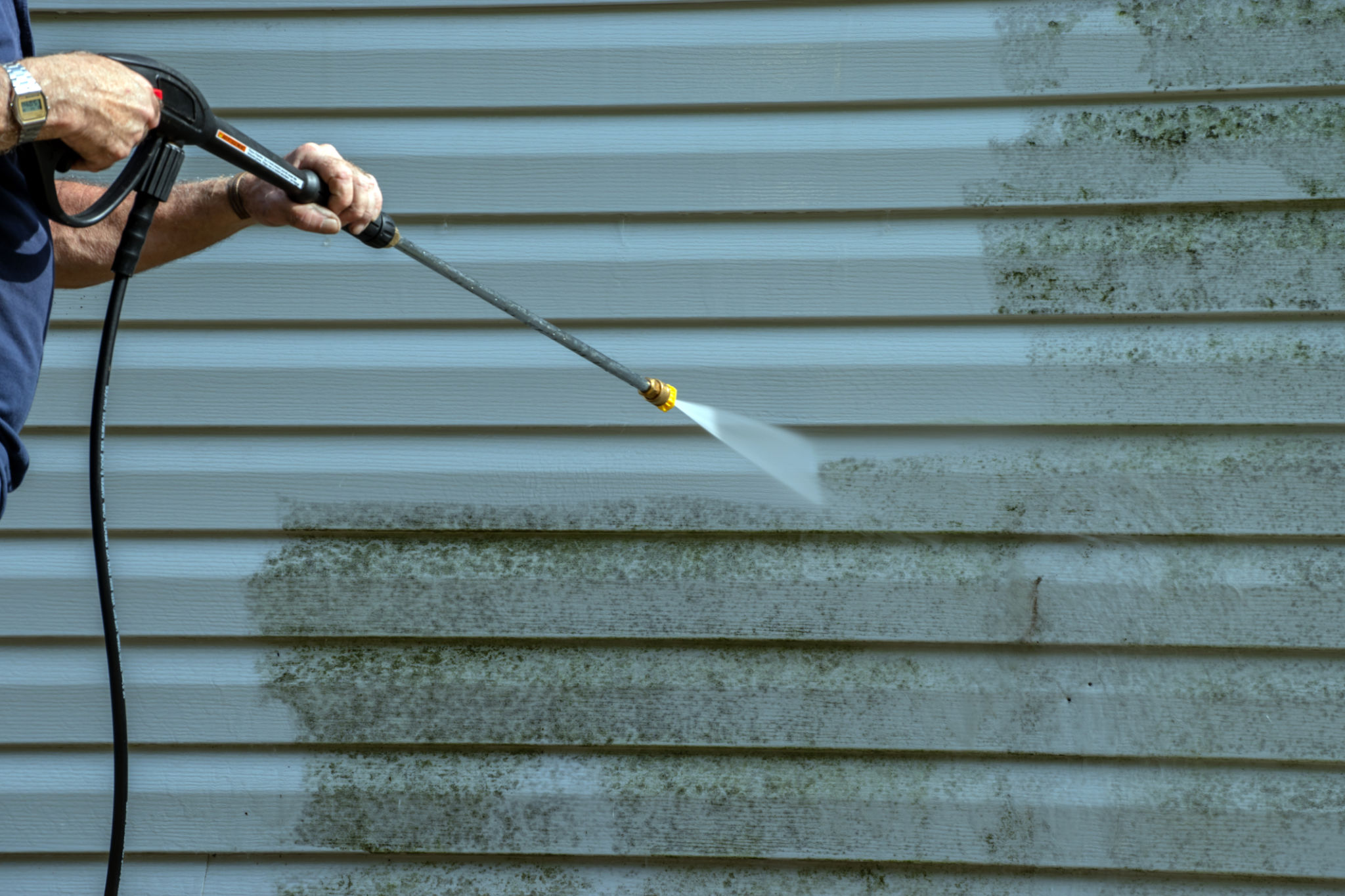The Ultimate Guide to Power Washing Your Home's Exterior
Understanding Power Washing
Power washing, also known as pressure washing, is a highly effective method for cleaning the exterior surfaces of your home. It involves using high-pressure water to remove dirt, mold, mildew, and other debris. This process can significantly enhance the appearance of your home, making it look fresh and well-maintained.
Before starting, it's important to determine the type of surfaces you will clean, as different materials require different settings and techniques. Common surfaces that benefit from power washing include siding, decks, driveways, and patios.

Choosing the Right Equipment
When it comes to power washing, selecting the right equipment is crucial to achieving the best results. There are two main types of washers: electric and gas-powered. Electric washers are ideal for smaller tasks and are quieter and more eco-friendly. Gas-powered washers, on the other hand, offer more power and are suitable for larger jobs.
Additionally, you should choose the appropriate nozzle for your task. Nozzles come in various sizes and angles, impacting the pressure and spray pattern. For example, a 0-degree nozzle delivers a concentrated stream of water for tough stains, while a 40-degree nozzle is better for general cleaning.
Preparing Your Home
Before you begin power washing, it's essential to prepare your home properly. Start by clearing the area of any outdoor furniture, decorations, or potted plants. Cover any delicate plants and electrical outlets with plastic sheeting to protect them from water damage.
It's also a good idea to inspect your home's exterior for any loose or damaged siding, as power washing can exacerbate these issues. Repairing or securing these areas beforehand will prevent further damage during cleaning.

Power Washing Techniques
Once you're ready to start power washing, it's important to use the correct techniques to ensure an effective clean without causing damage. Begin by standing a few feet away from the surface and gradually move closer as needed. Always keep the nozzle moving in a sweeping motion to avoid concentrating too much pressure in one spot.
For vertical surfaces like siding, work from the bottom up to prevent streaks. When cleaning horizontal surfaces such as driveways or decks, move in a consistent pattern to ensure even coverage.
Safety Precautions
Power washing can be dangerous if not done correctly. Always wear protective gear such as goggles, gloves, and sturdy footwear to protect yourself from flying debris and accidental contact with high-pressure water. Be mindful of your surroundings and avoid pointing the spray at people or pets.

It's also important to be aware of electrical hazards. Keep the power washer's cord away from water and ensure that any nearby electrical outlets are covered and protected.
Maintaining Your Power Washer
After completing your power washing project, take the time to properly maintain your equipment. Start by flushing out any remaining detergent from the system to prevent clogs or damage. Inspect hoses and nozzles for wear or blockages, replacing them if necessary.
Store your power washer in a dry place and follow any specific maintenance instructions provided by the manufacturer to ensure its longevity and performance.
The Benefits of Regular Power Washing
Regular power washing offers numerous benefits for your home. It not only improves curb appeal but also prolongs the life of your exterior surfaces by removing harmful substances like mold and algae. Moreover, it can boost your home's value by maintaining its appearance and structural integrity.
By incorporating power washing into your regular home maintenance routine, you'll keep your property looking its best while protecting your investment for years to come.

